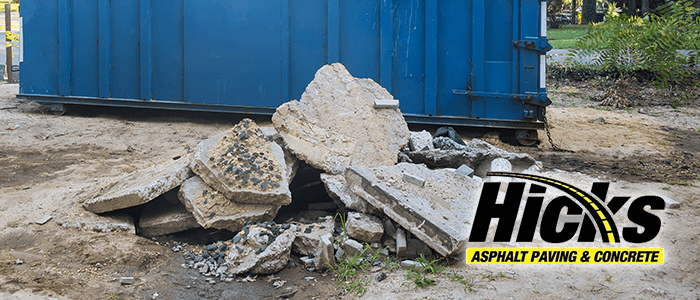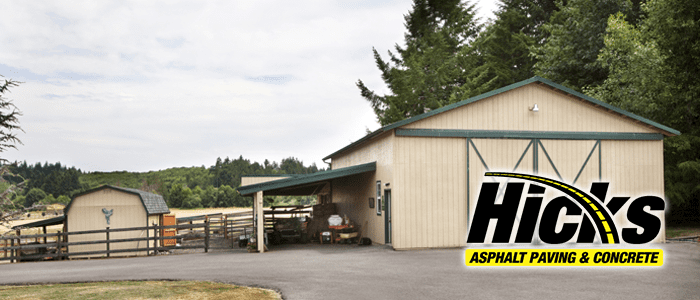When it comes to concrete removal, there is a precise way it should be done. Whether it is riddle with deep cracks, shows signs of setting or is flaking away in large pieces, it’s probably time to get rid of it. Concrete removal may seem like a daunting, expensive task, however, depending on the size and thickness of the section that needs removal, you have different options.
Your Options
First things first—deciding which approach is best for addressing your concrete project.
Complete Removal
Generally, complete concrete removal is your best option if any of the following are occurring on your driveway, patio, sidewalk, or slab:
- Multiple cracks – such as wide and deep cracks that are uneven on one side
- Frost heave – part of the concrete pushes up due to the frost that occurs in colder climates
- Settled concrete – caused by the subgrade’s improper preparation
Repairs
Simply repairing the concrete may be the more cost-effective and faster option in these situations:
- Thin cracks – small, hairline cracks with no evidence of settling
- Sunken concrete – caused by heavy equipment or load (e.g., a heavy dumpster) that sitting on the concrete
Demolition Tools and Materials
Chipping Hammers
Chipping hammers are lightweight, hand-held concrete breakers that easily break vertical and overhead surfaces. By offering a controlled chipping action, these hammers allow operators to precisely chip away only specific areas.
The smallest chipping hammers, powered electrically, pneumatically, or hydraulically, usually weigh between five and thirty pounds. As usual, a good indication of the power of the tools is their weight. The heavier the tool, the more powerful it is apt to be. The chipping action of this type of equipment is rapid, ranging from 900 to 3,000 blows per minute.
Because chipping hammers typically break concrete on vertical and overhead surfaces, they must be light. They are maneuvered by holding a handle at the back of the tool and gripping the tool by the shaft with the other hand. Some tools have a second handle along the side. This gives the operator control of the tool’s weight and the ability to direct its chipping action at different angles.
Wire Saws
Wire saws were first developed in the quarry industry, and diamond wire saws have been used in concrete demolishing work to cut reinforced concrete since the early 1980s.
A loop of diamond wire mounted on a flywheel driven by a hydraulic or electric motor. Hydraulic drives powered by electric, gasoline, or diesel units are usually preferred on wire saws when cutting reinforced concrete, since they are both reversible and provide continuously variable speed. Water is applied to the cut to provide cooling and to flush the cut.
Diamond wire saws are more efficient than circular saws, able to cut concrete of almost any thickness. This makes them very useful for the kind of heavy demolition found in bridges, damns and thick concrete structures. In addition, they create little dust, noise and vibration, making them ideal for demolition work within inhabited structures.
The real force behind the diamond wire saw is the diamond wire itself a steel carrier cable threaded through steel beads to which diamond is bonded. There are three basic wire types:
- Electroplated beads with compressed steel spring spacers.
- Impregnated beads with compressed steel spring spacers
- Impregnated beads with injection-molded plastic spacing





